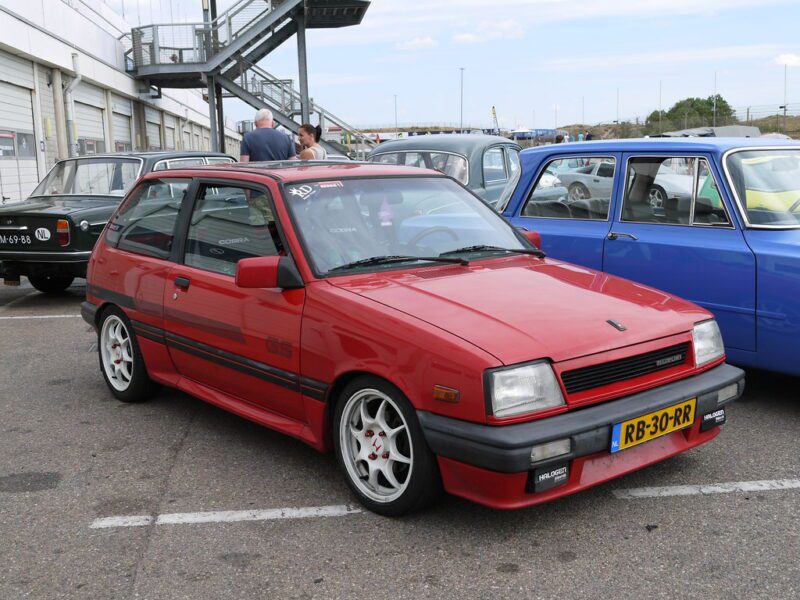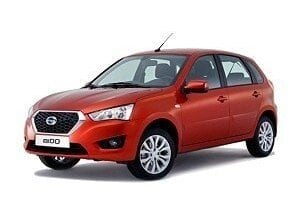
Suzuki Fire 1.3GS
Content
Everything looks like elephants! The previous generation Ignis may have seemed a little more in favor of the specific (and at the same time average) European taste, but in this generation, which was unveiled at the recent Frankfurt Motor Show, we can still notice the typical traits. Opel of the modern era.
The main drawing of Ignis remains unchanged; from the side, it acts like a bland off-road van, when in reality it is a small limousine next to the more luxurious B-segment cars in space. The crowd is huge there, as customers are still the most.
Clio and Punto reign supreme here, and Polo, 206, C3, Fiesta, Corsa are also negligible. And when the class of small limousine vans (Meriva, Idea) is just emerging in Europe, some Japanese cars seem to be clairvoyant products that Europe has not (yet) understood. And Ignis too.
Maybe now is the right time for them and for Ignis. The outer dimensions allow the interior space to be spacious enough to make the Ignis a class above. In fact, it is only given by the width of the cabin, which remains within the subcompact class. The length intended for passengers, and especially the height, is safe to say, luxurious for this class.
In any case, Ignis will undoubtedly convince the European with its atmosphere. The proverbial gray has given way to black, and the materials for this class are better than you might expect. The fabric gives an impression of durability, the plastic is slightly more pleasant to the touch. Okay, Ignis doesn't really set new standards, but hop into it from old Swift and it should be clear to you. And finally: thanks to the colors used and the shape of the atmosphere, the sensations of Ignis are pleasant. European pleasant.
Anyone judging a relationship with Opel by Ignis headlights and taillights will be on the right track.
Behind the wheel, the kinship continues: Opel has levers on the steering wheel, a headlight switch and a switch for adjusting the exterior mirrors. The Corsa or Meriva also resembles the center of the dashboard, which houses a large Blaupunkt audio system (radio and CD player) with excellent key ergonomics, but no screen. Namely, it is separate and completely located above the dashboard, and also contains information about the time, outside temperature and current fuel consumption. This is the only trip computer data that Ignis offers, unfortunately you cannot even pay extra for additional data.
Ignis has expanded its inventory as follows: GC, GLX and GS. Thus, the test Ignis was the best equipped, and judging by the instructions booklet, one could only wish additional heating for the front seats. Blaupunkt air conditioning and sound system are part of the GS package.
The Ignis, which is shorter than it looks (less than 3 meters long), still has excellent access to the interior. A pair of doors on the hips makes it easy to sit in the front or rear seat of an 8-meter vehicle that is already set high in front of your eyes. Yes, at around 1ths the Ignis also becomes all-wheel drive and thus more useful in deteriorating driving conditions, but only with front-wheel drive it will satisfy many people. It sits in it a little more and with that the visibility in front and the visibility of what is happening on the road is very good.
Ostensibly the trunk deserves the least praise from Ignis. By itself, it is large enough to absorb the luggage of everyday routes, and the promised cubic meter of maximum space is tempting. The downside is gradual scalability; the back of the bench can be increased by a third, that's all. Neither the bench seat folds, nor the bench is longitudinally movable, and the load edge itself is quite high.
One of the best parts of Ignis is the ride. The steering wheel is not adjustable (in any direction, but the instrument visibility is always perfect), the driver's seat is not adjustable in height, but the driver still finds a comfortable position for driving. Ignis impresses with its ease of use and manoeuvrability. In town, it's light and unpretentious, thanks in part to soft pedals and (electric) power steering, and on winding back roads, it's a pleasant driving companion. Only when the car is stationary does the steering wheel become too heavy when cornering.
Probably the best part of the mechanics is the Ignis engine. Just a few hundred rpm above idle, that's enough torque already, so it's always easy to start – even uphill or with a full car. This allows you to drive in a lower engine speed range and thus satisfy more relaxed drivers - or those who are trying to drive economically.
But the 1-liter engine doesn't show that yet; Thanks to the technology of changing the angle of inclination of the camshaft, its liveliness increases with revolutions, and only above a good 3 rpm the desire to rotate slowly decreases. Such a seemingly typical Suzuki product: vigorous, but loud at increasing revs and, of course, noticeably more voracious. When driving, the consumption rises above 6000 liters per hundred kilometers, and the engine noise becomes annoying.
Again, typically Suzuki (and generally recognizably Japanese) is the gearbox; with a hard-hitting lever, with relatively smooth shifting (especially in fifth gear), with occasional resistance to shifting into reverse gear, and with a slightly modest fifth gear. In it, the Ignis (mainly due to the flexible motor) accelerates from lower speeds, but still tops out in fourth gear.
The chassis deserves the least praise. During normal driving on normal roads, it seems well tuned, and any unevenness (hole, bulge) shakes the body and, consequently, the passengers. The soft body also tilts a little; longitudinally when accelerating and braking, transversely when cornering, so the inner drive wheel also likes to shift to neutral when accelerating hard in first or second gear from a tight corner. Therefore, you shouldn't expect too much from such an Ignis in terms of road position, despite the promises that the sports engine makes.
Otherwise, if you are going to ride it anyway, the typical front-wheel drive response is: if you are surprised by a turn, you need to add a small steering wheel, but if you are going to accelerate (or even a brake), then the steering wheel will need to be removed because the rear will want to overtake the front. In general, it can be controlled, and in critical cases, the braking system perfectly feels the pedal, but it is still important to be careful.
While you may find that they also race Ignis, the Ignis, as we tested it, is primarily a family car. With all the tech mostly deserving of very good reviews, the atmosphere is one that will try to convince. Of course, for the price.
Vinko Kernc
Photo: Aleš Pavletič.
Suzuki Fire 1.3GS
Basic data
| Sales: | Suzuki Odardoo |
|---|---|
| Base model price: | 11.711,73 € |
| Calculate the cost of auto insurance | |
| Power: | 69kW (94 KM) |
| Acceleration (0-100 km / h): | 11,5 with |
| Maximum speed: | 160 km / h |
| Mixed flow ECE: | 8,2l / 100km |
| Guarantee: | 3 years powertrain warranty, 6 years bodywork warranty, 12 years enclosed powertrain warranty. |
Our measurements
| T = 16 °C / p = 1007 мбар / отн. fl. = 53% / Gume: 165/70 R 14 T (Continental ContiEcoContact EP) | |
| Acceleration 0-100km: | 11,5s |
|---|---|
| 1000m from the city: | 33,7 years ( 149 km / h) |
| Flexibility 50-90km / h: | 15,0 (IV.) S |
| Flexibility 80-120km / h: | 26,1 (W) p |
| Maximum speed: | 160km / h (V.) |
| Minimum consumption: | 6,3l / 100km |
| Maximum consumption: | 10,3l / 100km |
| test consumption: | 8,2 l / 100km |
| Braking distance at 100 km / h: | 42,8m |
| AM table: | 43m |
| Noise at 50 km / h in 3rd gear | 60dB |
| Noise at 50 km / h in 4rd gear | 58dB |
| Noise at 50 km / h in 5rd gear | 58dB |
| Noise at 90 km / h in 3rd gear | 66dB |
| Noise at 90 km / h in 4rd gear | 64dB |
| Noise at 90 km / h in 5rd gear | 64dB |
| Noise at 130 km / h in 3rd gear | 73dB |
| Noise at 130 km / h in 4rd gear | 70dB |
| Noise at 130 km / h in 5rd gear | 69dB |
| Test errors: | unmistakable |
